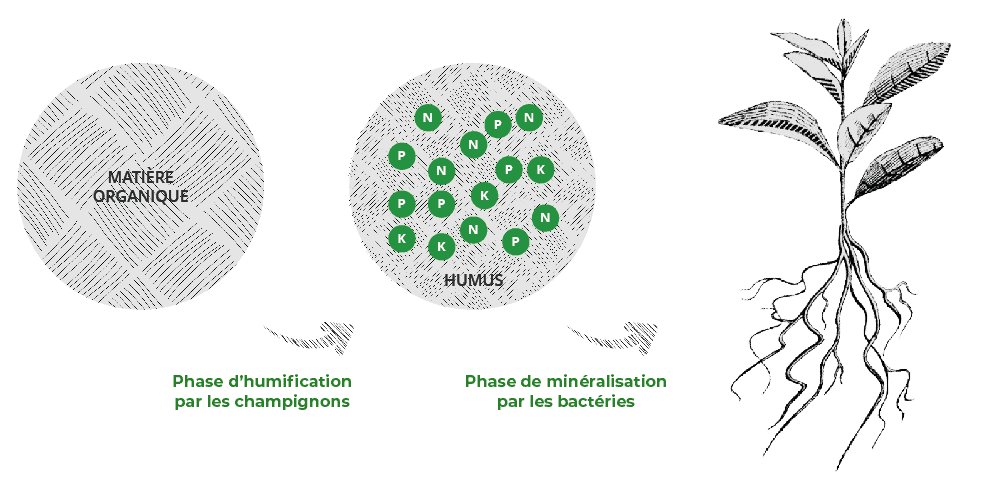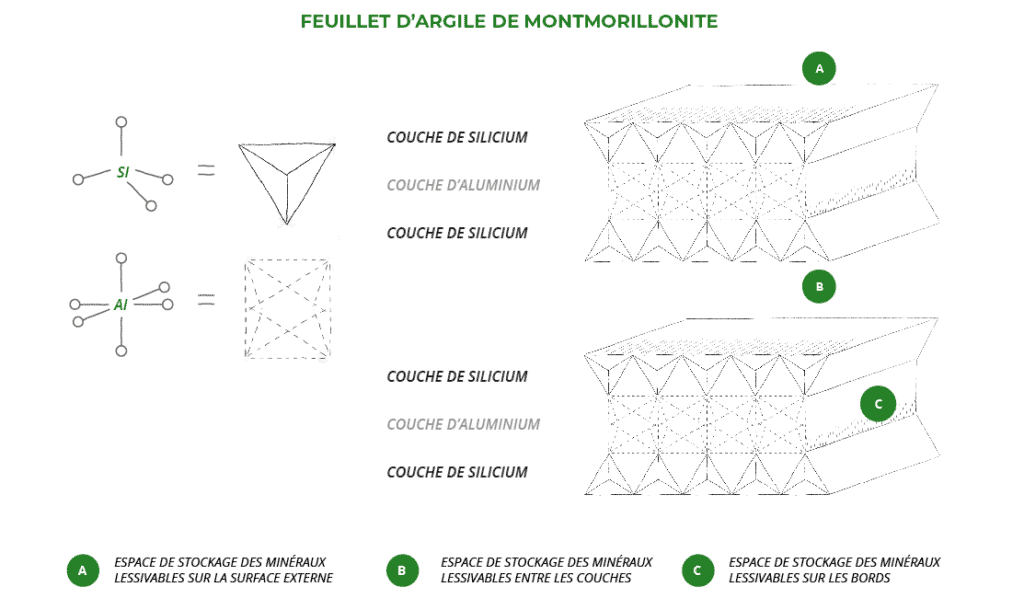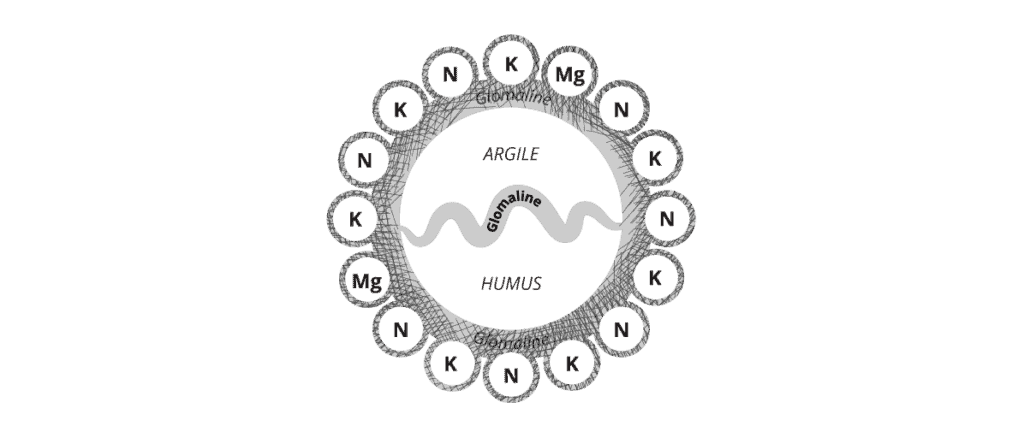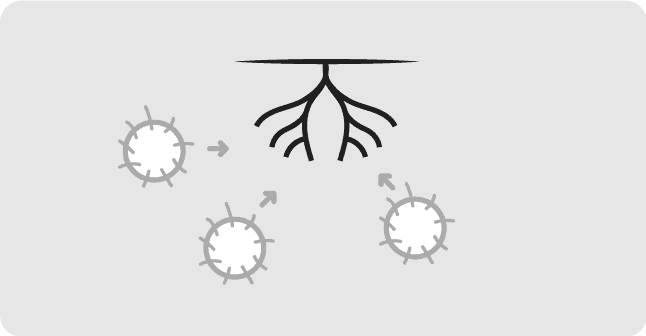
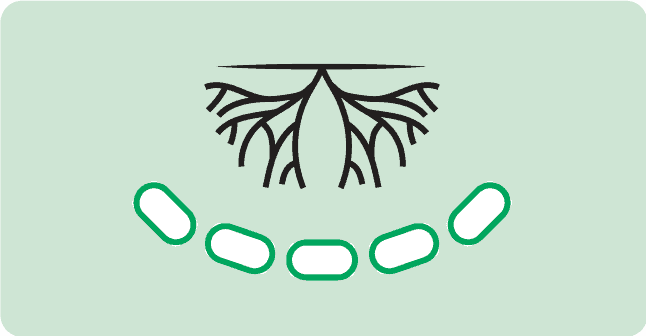
Disease reduction through biological soil control with processes that favour beneficial microorganisms
Biological control consists of using living organisms or their components (pheromones, toxins, stimulants, extracellular enzymes, etc.) to suppress or, failing that, control populations of harmful organisms. In agricultural production systems, pathogenic species multiply, sometimes without limit, when they no longer encounter their natural enemies in the environment. It is the theory of ecological weakening that occurs as soils become biologically tired.
The law of nature predicts that every living organism, from the smallest to the largest, will at some point be targeted by one or more predators to maintain a proper, diverse and autonomous functional balance. This is the case, for example, in forest soils where pathogens are naturally regulated without human intervention in that ecosystem. Unfortunately, this ideal conservation program for natural predators is difficult to replicate on a farm where humans must interfere with the environment to produce and feed human populations.
Therefore, biological control makes it possible to use the enemies of pest species to regulate the population. If the pathogens are not accompanied by their natural predators, they can adapt to their new environment and colonise it very aggressively. The worst examples are that of the grapevine phylloxera that arrived from North America in 1861 and the Colorado canker that arrived from Canada in the late 19th century. The protection that can be provided by the use of a biological control agent is the result of careful research into the existing balance of power between predators and pests. Knowing the modes of action requires an understanding of the interactions between the different living organisms present in a natural environment. The most common modes of action are competition for food, oxygen and space.
These are all methods that increase populations of beneficial organisms by modifying the environment or agricultural practices. This is the case, for example, with the creation of fences, relay facilities that protect biological control agents or the implementation of practices related to soil conservation. We strongly recommend soil conservation practices to control plant diseases, because almost all plant pathogens that are present in plants are mainly soil-borne. Maintaining your soil through good practices helps it to grow beneficial fungi in competition with pathogens to take up space in the soil.
Then it is a matter of breaking this cycle by favouring the emergence of beneficial fungi in the soil at the expense of pathogens, carriers of many diseases such as foot rot, fusarium or sclerotinia.
Based on this principle, Terrabiotec products for soil application such as :
- granular Terra Mineral, Terra Crop, Terra Myco etc,
- the Terra Mineral microgranules,
- the water-soluble Terra First and Terra Myco
- as well as the liquids Terra Flow
contains technology (as one of the 6 technologies) which favours and promotes the proliferation of beneficial soil fungi with the main objective of their rapid growth and their predominance over pathogenic fungi , ensuring a microbiologically oriented soil compared to common fertilizers.

